Scientists are celebrating one of the "greatest finds" in British palaeontological history after the skeleton of a 180 million-year-old sea dragon was discovered in Rutland.
Measuring 10 metres in length with a skull weighing approximately one tonne, the ichthyosaur is the largest and most complete fossil of any marine reptile found in Britain.
The discovery was made by Joe Davis, an employee of the Leicestershire and Rutland Wildlife Trust, during a routine draining of a lagoon island at Rutland Water in February 2021.
Ichthyosaurs were marine reptiles that lived in Britain 250 million years ago. They went extinct 90 million years ago.
The animal was characterised by its large teeth and eyes, and ranged in size from one to more than 25 metres. It was first identified in the 19th century by the palaeontologist Mary Anning.
Dr Dean Lomax, a palaeontologist who has studied the species, said:
"Despite the many ichthyosaur fossils found in Britain, it is remarkable to think that the Rutland ichthyosaur is the largest skeleton ever found in the UK. It is a truly unprecedented discovery and one of the greatest finds in British palaeontological history.When they first spotted the remains poking out of some clay, team members at Leicestershire and Rutland Wildlife Trust were unsure about their origins and suggested that they could simply be pipes. After speaking to Rutland council, experts from the University of Leicester were called and the ichthyosaur skeleton was identified.
"Not only is it the largest ichthyosaur skeleton ever found in Britain, but it is also the most complete skeleton of a large prehistoric reptile ever discovered in the UK. And yes, that includes dinosaurs."
The remains were dug out by a team of expert palaeontologists from around the UK in August and September. They worked in partnership with Anglian Water, Rutland County Council and the Leicestershire and Rutland Wildlife Trust.
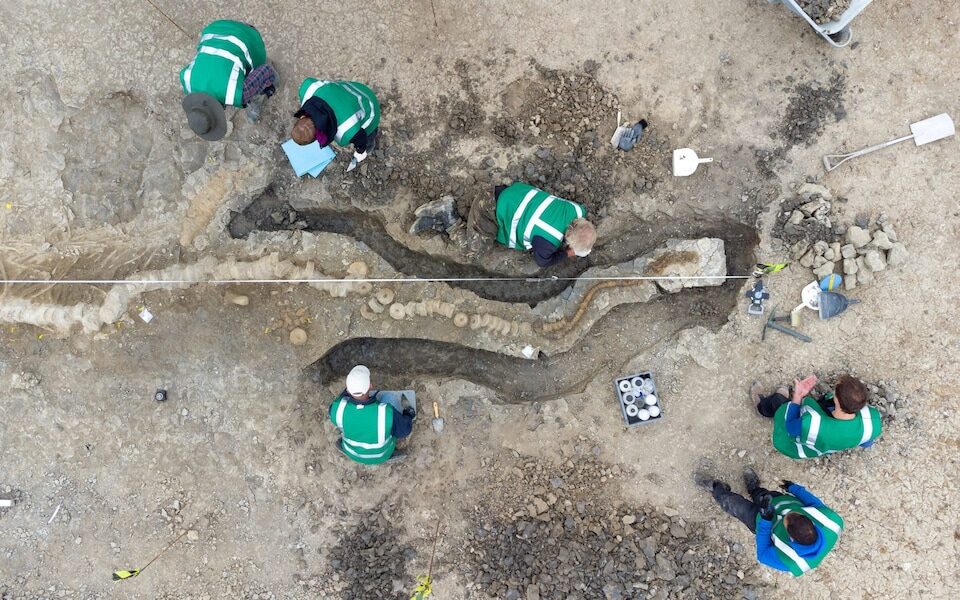
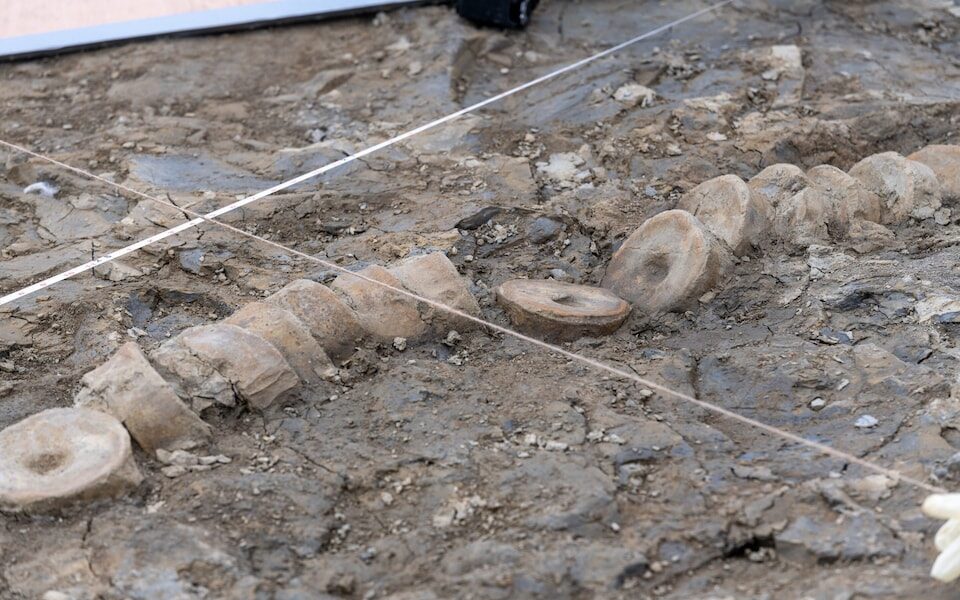
"To put this find into context for the public; in the world of British palaeontology, the discovery is like finding a complete Tyrannosaurus rex out in the Badlands of America, only this Jurassic giant was found in a nature reserve in Rutland, of all places. It is a truly unprecedented discovery and one of the greatest finds in British palaeontological history," Dr Lomax said.
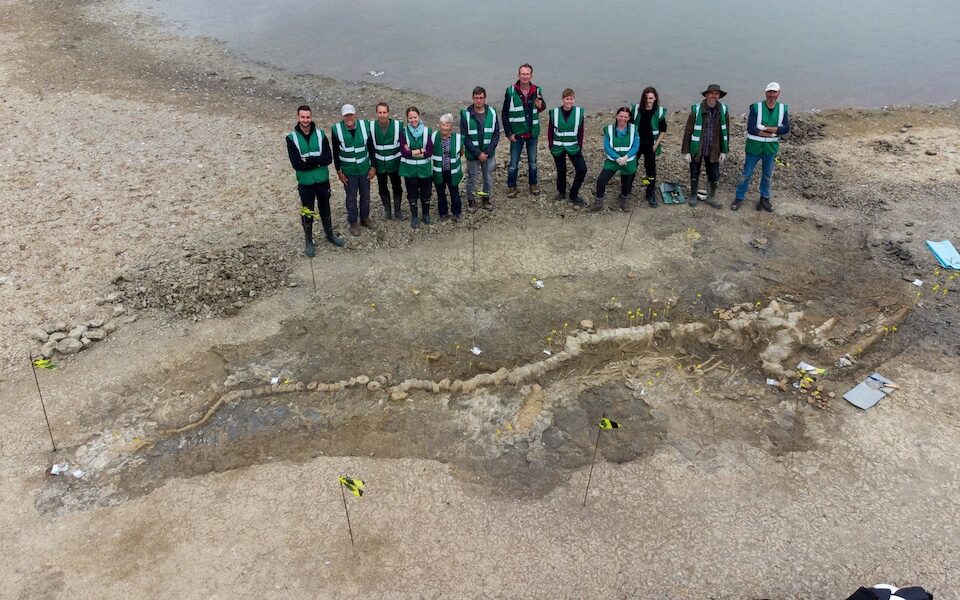
Dr Mark Evans of the British Antarctic Survey said:
"I've been studying the Jurassic fossil reptiles of Rutland and Leicestershire for over 20 years. When I first saw the initial exposure of the specimen with Joe Davis I could tell that it was the largest ichthyosaur known from either county. However, it was only after our exploratory dig that we realised that it was practically complete to the tip of the tail."Nigel Larkin, a specialist palaeontological conservator, said: "It's not often you are responsible for safely lifting a very important but very fragile fossil weighing that much.
"It's a highly significant discovery both nationally and internationally but also of huge importance to the people of Rutland and the surrounding area."
"It is a responsibility, but I love a challenge. It was a very complex operation to uncover, record, and collect this important specimen safely."
The excavation of the remains will feature on BBC Two's Digging For Britain on Tuesday at 8pm.
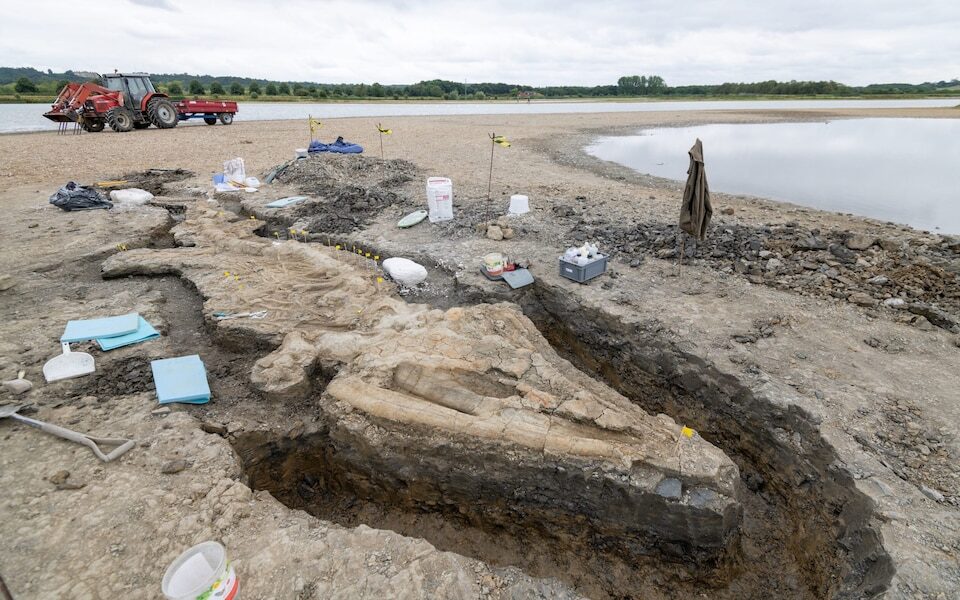
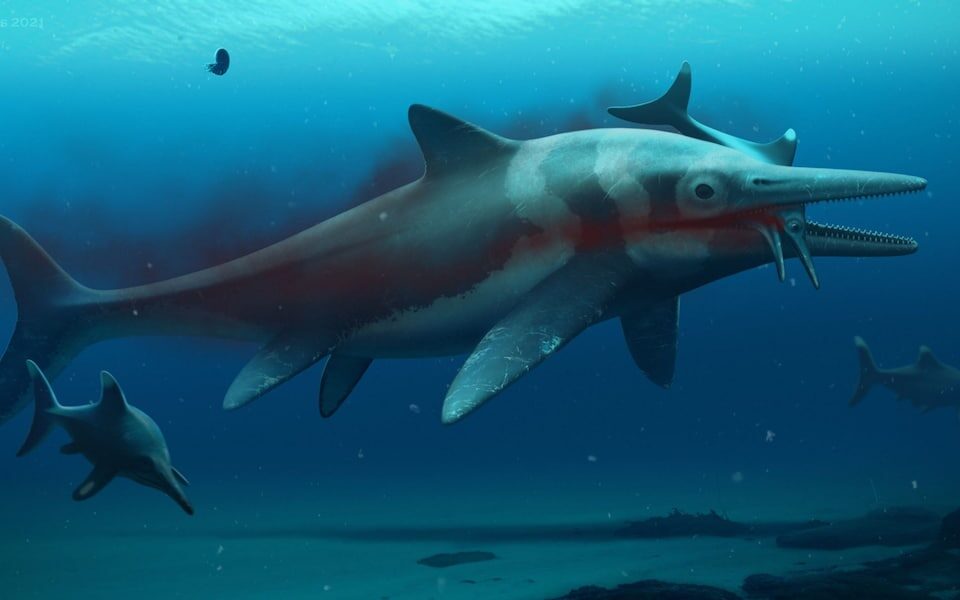
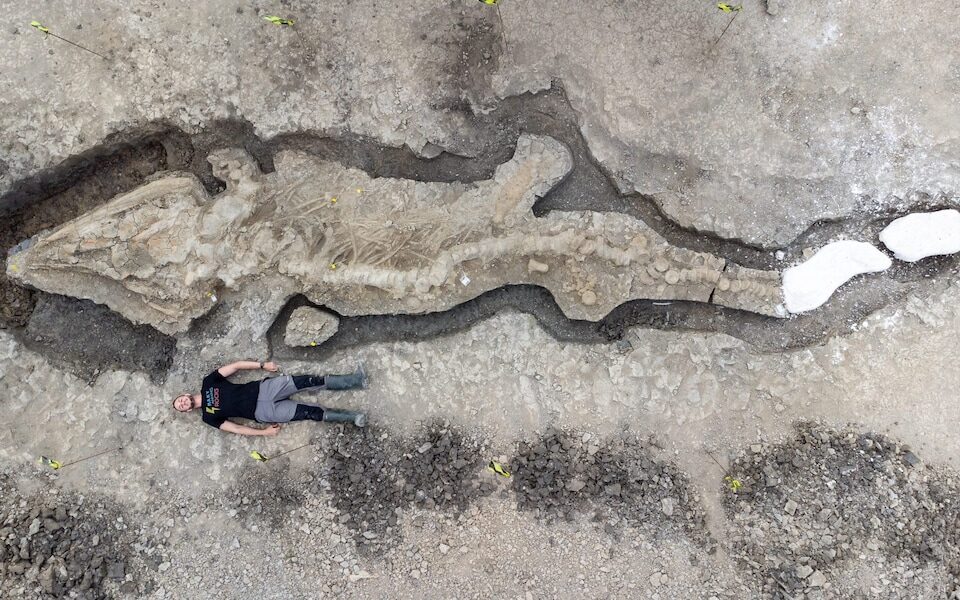



Reader Comments
The Skeleton of Jebal-Barez
The name should have been a clue: Shill ing. Today Signs Received this link from a reader. Scroll down and look at the photos of the "creature." Thing is, it is a hoax.[Link]
Badger finds Roman coins in Spain
[Link]
Sea Dragon
[Link]
Boris Johnson is faced with a cold blooded revelation regarding ancestry.....this week we will be visiting Rutland Nature Reserve to dig up some truth about habits that die hard, with the muddy waters of the eugenic evolutionary losers now settled...we gain more insight into how family bonds with the past, where Boris makes no bones about its likeness in lifestyle.
R.C.